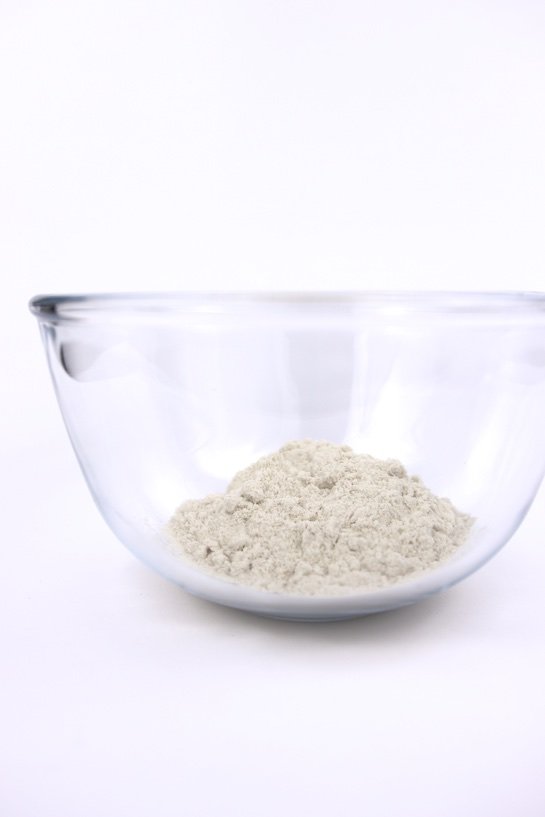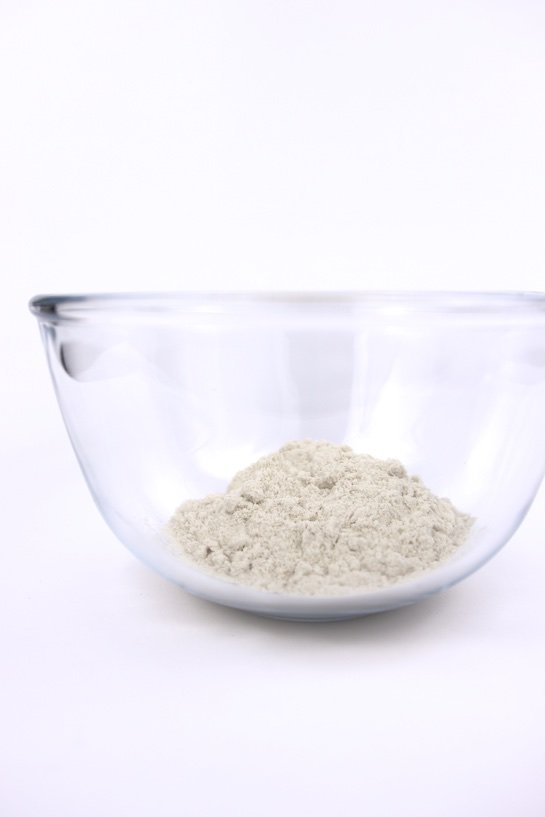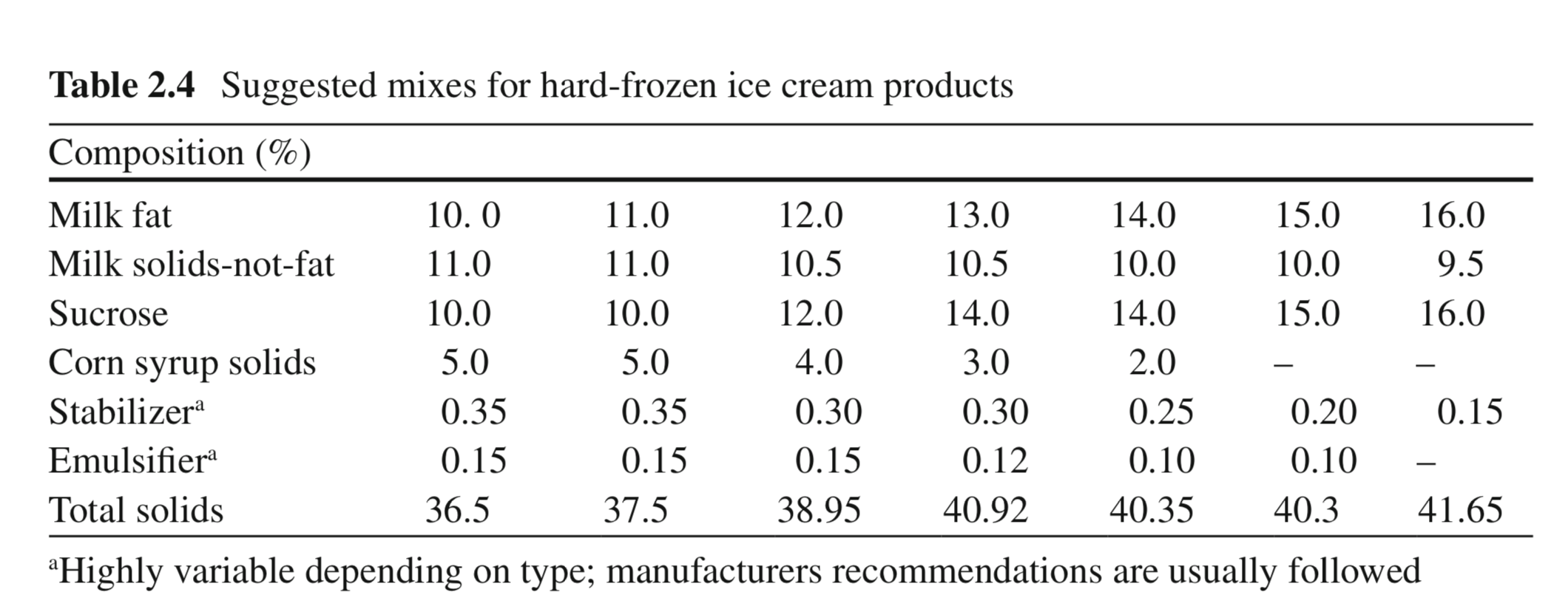Why are stabilizers used in ice cream?
11 MINUTE READ Ice cream generally contains seven categories of ingredients: milk fat, milk solids-not-fat (the lactose, proteins, minerals, water-soluble vitamins, enzymes, and some minor constituents), sweeteners, stabilizers, emulsifiers, water, and flavours. In this post, we’ll be looking at why stabilizers are used in ice cream.
Ice cream generally contains seven categories of ingredients: milk fat, milk solids-not-fat (the lactose, proteins, minerals, water-soluble vitamins, enzymes, and some minor constituents), sweeteners, stabilizers, emulsifiers, water, and flavours. In this post, we’ll be looking at why stabilizers are used in ice cream.
You might also like to read:
The best ice cream maker 2020 - A comprehensive review
Vanilla Bean Ice Cream - Recipe
Cuisinart ICE-100 Ice Cream Maker - A Comprehensive Review
Lello 4080 Musso Lussino Ice Cream Maker - A Comprehensive Review
Sugar in ice cream
How To Calculate An Ice Cream Mix
[toc]
Key points
• 0.2% sodium alginate produces in the highest increase of mix viscosity
• Ice cream samples containing a blend of sodium alginate and K-carrageenan at a concentration of 0.2% and a primary to secondary ratio of 9:1 had the highest overall scores after storage for 16 weeks
1. Why are stabilizers used in ice cream?
The primary purposes for using stabilizers in ice cream are: to increase mix viscosity; to increase the perception of creaminess; to provide resistance to melting; to retard the growth of ice and lactose crystals during storage, especially during periods of temperature fluctuation; to prevent 'wheying off'; and to help prevent shrinkage during storage ([^1] [^2]). Many of these functions are attributed to the enhanced viscosity of the ice cream mix.
1.1 To Increase Mix Viscosity
Viscosity can be loosely defined as the thickness of a liquid, with thicker liquids having higher viscosities (honey has a higher viscosity than water for example). In general, as the viscosity of an ice cream mix increases, the perception of creaminess and resistance to melting increases, but the amount of air, or overrun, decreases ([^3]). The most important factor responsible for enhancing the viscosity of an ice cream mix is the addition of stabilizers ([^4] [^5] [^6] [^7]).
1.1.1 To Increase the perception of creaminess
Ice cream acceptability by consumers is mainly perceived by means of texture and flavour with creaminess considered to be the most important textural attribute. Creaminess can be defined as the determinant effect of a miscible, thick, smooth, and soft liquid in the mouth ([^8]). Creaminess perception, primarily associated with a high milk fat content and small ice crystal size, is also strongly influenced by the viscosity of the ice cream mix ([^9] [^10]) with higher ratings of creaminess attributed to ice cream with higher viscosity ([^10] [^11]).
1.1.2 To provide resistance to melting
The slow meltdown, good shape retention, and slower foam collapse are some of the important quality parameters of ice cream ([^12]). Stabilizers significantly affect the melting quality of ice cream through their viscosity-enhancing properties: as viscosity increases, the rate at which ice cream melts slows significantly ([^11] [^13] [^14] [^15]).
1.1.3 Which stabilizers have the greatest effect on increasing viscosity?
Soukoulis et al.([^11]) studied the functionality of different stabilizers on the rheological, physical, and sensory characteristics of ice cream mixes and frozen ice cream. Carboxylmethylcellulose, guar gum, sodium alginate, and xanthan gum were used as the primary stabilizers at either 0.1% or 0.2%, and K-carrageenan as the second stabilizing agent at a 9:1 primary to secondary ratio. The researchers found that the ice cream mix containing 0.2% of sodium alginate had the greatest viscosity, whereas the ice cream mix containing guar gum at 0.1% had the lowest viscosity.
1.2 To retard or reduce ice and lactose crystal growth during storage
Ice crystal size is a critical factor in the development of smooth and creamy ice cream ([^16]). Smooth and creamy ice cream requires the majority of ice crystals to be small, around 10 to 20 µm in size. If many crystals are larger than this, ice cream will be perceived as being coarse or icy ([^2] [^17]).
During distribution and storage, ice and lactose crystals grow and undergo recrystallisation, which eventually leads to coarse or icy texture. Recrystallisation is defined as “any change in number, size, shape... of crystals [during storage]" ([^18]) and basically involves small crystals disappearing, large crystals growing, and crystals fusing together.
The 3 main types of recrystallisation are isomass, migratory, and accretive recrystallisation ([^19]). Isomass recrystallisation is the change in shape of a crystal without change in mass. Accretion is the joining together of two or more adjacent ice crystals to form a single, larger crystal. Migratory recrystallisation, or Ostwald ripening, involves melting of smaller crystals and movement of the melted liquid to the surface of larger crystals ([^18] [^20]). At higher temperatures, smaller ice crystals melt partially or completely and when the temperature is lowered again, the water diffuses refreezes on the larger crystals ([^21]) resulting in larger crystals.
Migratory recrystallisation is influenced greatly by the rate at which the water molecules diffuse, or move, to the larger ice crystal surface, which is known as diffusion kinetics. The diffusion, or movement, of the water is largely dependent on the viscosity of the serum phase: as the viscosity of the unfrozen serum phase increases, the diffusion, or movement, of water molecules decreases, thus retarding ice crystal growth ([^22]).
1.2.1 Constant and fluctuating temperatures
Recrystallisation during storage is significantly slower for ice cream stored at a constant temperature than for ice cream stored at fluctuating temperature conditions ([^20] [^23]). At a constant storage temperature, the rate of recrystallisation increases with increasing temperatures, being particularly rapid at storage temperatures above -14°C (6.8°F) ([^20]). Earl & Tracy([^24] found that ice cream stored at -26.1°C (-15°F) suffered only slight textural deterioration after 16 weeks, but storage at -13.3°C (8.1°F) resulted in a coarse texture after only 2 weeks.
Ice cream stored in a ‘supermarket-type frost/defrost freezer’ with fluctuating temperature cycles between -9.4°C and -15°C (15.08°F and 5°F), however, was found to be detectably icy in 4 weeks and objectionably icy in 3-10 weeks ([^39]). Temperature fluctuations may be associated with 1. changes in temperature of storage as ice cream moves from point to point; 2. heat shocks, where ice cream is left at room temperatures for extended periods of time and then put back in the freezer; 3. automatic defrost cycles in frozen storage systems; and 4. opening and closing of doors in freezers and storage cabinets ([^2]).
1.2.2 How do stabilizers retard or reduce ice and lactose crystal growth during storage?
The mechanisms by which stabilizers limit or inhibit recrystallisation during storage have been extensively studied but are still not fully understood. Three mechanisms have been put forward.
1.2.2.1 Enhancement of viscosity retards ice crystal growth by retarding the diffusion of unfrozen water to the ice crystals
According to the first mechanism, the enhancement of viscosity of the unfrozen serum phase caused by stabilizers decreases the diffusion, or movement, of water molecules and thus retards ice crystal growth ([^22]). Herrera et al.([^25]), however, suggested that the effects of stabilizers on ice recrystallisation may be only partially explained by diffusion coefficients, leaving the possibility that some other mechanism(s) may still be important. Gel formation and phase separation between stabilizers and milk proteins may be other potential mechanisms of stabilizer activity ([^26] [^27]).
1.2.2.2 Ability of stabilizers to form cryogels
Recrystallisation has also been related to the capacity of some stabilizers to form gel-like networks around ice crystals during temperature fluctuations ([^28] [^29] [^30]). These gel-like networks retard the movement of water to a larger crystal and thus the growth of the ice crystal ([^27]). In the absence of stabilizer, this gel barrier is not present, so the water can diffuse faster and regrow on a bigger crystal, thus increasing its size.
1.2.2.2.1 Which stabilizers are able to form a gel-like network?
Locust bean gum is able to produce a gel-like network around the ice crystals, which becomes more distinct with repeated temperature cycles ([^31]). Regand and Goff([^27]) reported that carrageenan, which is also able to form a gel-like network, was more effective than locust bean gum in slowing down recrystallisation, as was reported more recently by Ndoye & Alvarez ([^32]).
1.2.2.3 Incompatibility of stabilizers with milk protein provokes phase separation, which may contribute to the recrystallisation retarding
Most of the stabilizers used in ice cream production are incompatible with milk proteins and will thus cause a phase separation known as ‘wheying off’. Wheying off refers to the leaking of a clear watery serum layer during the melting of ice cream, which has an undesirable appearance ([^2]). Xanthan gum is the most incompatible with milk proteins, followed by guar gum, and locust bean gum ([^34]). This phase separation may contribute to recrystallisation retarding ([^26] [^27]).
The addition of K-Carrageenan as a secondary stabilising agent at levels lower than 0.05% controls this undesirable phase separation ([^34] [^35] [^36]). The decrease of the protein-stabilizer incompatibility caused by k-carrageenan presence is associated with with the formation of weak gel-like conformations ([^34] [^37]). Soukoulis et al.([^11]), and more recently BahramParvar et al.,([^33]), reported that the presence of carrageenan as secondary stabilizer at a 9:1 primary to secondary ratio was found to be a crucial factor for cryoprotection as it enhanced the cryoprotective function of the primary stabilizers.
1.3 To help prevent Shrinkage
A potential problem that occurs during storage of ice cream is shrinkage. This defect, defined as the loss of volume in ice cream before any part of the product has been removed from the container ([^38]), appears as the ice cream pulling away from the walls of the container, and occurs most often when ice cream is transported between regions of different pressure (as when ice cream is transported over mountains) or via air transport ([^2] [^38]). The use of emulsifiers such as mono- and diglycerides with polysorbate 80, along with stabilizers such as a combination of locust bean gum, guar gum, and carrageenan, could be one of the solutions to shrinkage ([^38]).
2. How much stabilizer is used in ice cream?
Goff and Hartel([^2]) note that individual stabilizers seldom perform all of the desired functions; each has a particular effect on body, texture, meltdown, and stability in storage. Therefore, to gain synergism in function, individual substances are usually combined as mixtures of stabilizers and emulsifiers. Usually 0.2-0.5% of a stabilizer/emulsifier blend is used in the ice cream mix. Excessive use of stabilizer leads to an ice cream defect known as gumminess, in which the product does not melt sufficiently quickly in the mouth and retains excessive chewiness.
3. Summary
The primary purposes for using stabilizers in ice cream are to: 1. increase mix viscosity (produce a thicker mix), which in turn improves texture by increasing the perception of creaminess, provides resistance to melting, and extends shelf-life by retarding the growth of ice and lactose crystal growth during storage; 2. to prevent the undesirable leaking of a clear watery serum layer during the melting of ice cream (known as ‘wheying off’); and 3. to help prevent shrinkage during storage. 0.2% sodium alginate has been shown to have the greatest effect on increasing viscosity and a blend of sodium alginate and carrageenan at a concentration of 0.2% and at a primary to secondary ratio of 9:1 has been shown to have the greatest effect on maintaining quality after storage for 16 weeks.
4. References
[^1]: Goff, H. D., and Sahagian, M. E., 1996 Glass transitions in aqueous carbohydrate solutions and their relevance to frozen food stability. Thermochim Acta, 280:449–464.
[^2]: Goff, H. D., and Hartel R. W., 2013. Ice Cream. Seventh Edition. New York Springer.
[^3]: Marshall, R. T., Goff, H. D., and Hartel R. W., 2003. Ice cream (6th ed). New York: Kluwer Academic/Plenum Publishers.
[^4]: Davidson, V. J., Goff, H. D., and Flores, A., 1995. Flow characteristics of viscous dairy fluids in HTST holding tubes. J Dairy Sci, 78(S1): 105–108.
[^5]: Davidson, V. J., Goff, H. D., and Flores, A., 1996. Flow behavior of viscous, non-Newtonian fluids in holding tubes of HTST pasteurizers. J Food Sci, 61: 573–576.
[^6]: Goff, H. D. and Davidson, V. J., 1992. Flow characteristics and holding time calculations of ice cream mixes in HTST holding tubes. J Food Prot, 55: 34–37.
[^7]: Minhas, K. S., Sidhu, J. S., Mudahar, G. S., and Singh, A. K., 2002. Flow behavior characteristics of ice cream mix made with buffalo milk and various stabilizers. Plant Foods for Human Nutrition,57, 25–40.
[^8]: Kilcast, D., and Clegg, S., 2002. Sensory perception of creaminess and its relationship with food structure. Food Quality and Preference, 13, 609-623.
[^9]: Mela, D. J., Langley, K. R., and Martin, A., 1994. Sensory assessment of fat content: effect of emulsion and subject characteristics. Appetite, 22, 67–81.
[^10]: Akhtar, M., Stenzel, J., Murray, B. S., and Dickinson, E., 2005. Factors affecting the perception of creaminess of oil-in-water emulsions. Food Hydrocolloids, 19. 521-526.
[^11]: Soukoulis, C., Chandrinos, I., and Tzia, C., 2008. Study of the functionality of selected hydrocolloids and their blends with κ-carrageenan on storage quality of vanilla ice cream. Food Science and Technology. 41, 1816–1827.
[^12]: Wildmoser, H., Jeelani, S. A. K., and Windhab, E. J., 2005. Serum separation in molten ice creams produced by low temperature extrusion processes. International Dairy Journal, 15, 1074–1085.
[^13]: Uzomah, A., and Ahiligwo, R. N., 1999. Studies on the rheological properties and functional potentials of achi (Brachystegea eurycoma) and ogbono (Irvingia gabonesis) seed gums. Food Chemistry, 67, 217–222.
[^14]: Guven, M., Karaca, O. B., and Kacar, A., 2003. The effects of the combined use of stabilizers containing locust bean gum and the storage time on kahramanmaras-type ice creams. International Journal of Dairy Technology, 56(4), 223–228.
[^15]: Muse, M. R., and Hartel, R. W., 2004. Ice cream structural elements that affect melting rate and hardness. Journal of Dairy Science, 87, 1–10.
[^16]: Donhowe, D. P., Hartel R. W., and Bradley R.L., 1991. Determination of ice crystal size distributions in frozen desserts. Journal of Dairy Science. 74.
[^17]: Drewett, E. M., and Hartel, R. W., 2007. Ice crystallisation in a scraped surface freezer. Journal of Food Engineering, 78(3).
[^18]: Fennema, O. R., Powrie, W. D., and Marth, E. H., 1973. Low Temperature Preservation of Foods and living Matter. USA: Marcel Dekker, Inc.
[^19]: Cook, K. L.K and Hartel, R. W., 2010. Mechanisms of ice crystallization in ice cream production. Comprehensive Reviews in Food Science and food Safety. vol. 9.
[^20]: Donhowe, D. P., and Hartel, R. W., 1996. Recrystallization of ice in ice cream during controlled accelerated storage. International Dairy Journal. 6(11-12):1191-208.
[^21]: Sutton, R., and Bracey, J., 1996. The blast factor. Dairy Industries International. 61(2):31-33.
[^22]: Bolliger, S., Wildmoser, H., Goff, H. D., and Tharp, B. W., 2000. Relationships between ice cream mix viscosity and ice crystal growth in ice cream. International Dairy Journal. 10, 791e797.
[^23]: Donhowe, D. P., and Hartel, R. W., 1996. Recrystallization of ice during bulk storage of ice cream. International Dairy Journal. 6(11–12):1209–21.
[^24]: Earl, F. A., and Tracy, P., H., 1960. The importance of temperature in the storage of ice cream. Ice Cream Trade Journal. 56(11), 36-37, 40, 42, 78-80.
[^25]: Herrera, M. L., M’Cann, J. I., Ferrero, C., Hagiwara, T., Zaritzky, N. E., and Hartel, R. W., 2007. Thermal, mechanical, and molecular relaxation properties of stabilized frozen sucrose and fructose solutions. Food Biophys. 2:20–28.
[^26]: Regand, A., and Goff, H. D., 2002. Effect of biopolymers on structure and ice recrystallization in dynamically frozen ice cream model systems. Journal of Dairy Science. 85:2722–2732.
[^27]: Regand, A., Goff, H. D., 2003. Structure and ice recrystallization in frozen stabilized ice cream model systems. Food Hydrocolloids. 17:95–102.
[^28]: Blond, G., 1988. Velocity of linear crystallization of ice in macromolecular systems. Cryobiology. 25, 61-66.
[^29]: Muhr, A. H., and Blanshard, J. M., 1986. Effect of polysaccharide stabilizers on the rate of growth of ice. Journal of Food Technology. 21, 683-710.
[^30]: Patmore, J. V., Goff, H. D., and Fernandes, S., 2003. Cryogelation of galactomannans on ice cream model systems. Food Hydrocolloids. 17, 161-169.
[^31]: Goff, H. D., Ferninando, D., and Schorsch, C., 1999. Fluorescence microscopy to study galactomannan structure in frozen sucrose and milk protein solutions. Food Hydrocolloids. 13, 353-362.
[^32]: Ndoye, F. T., and Alvarez, G., 2015. Characterization of ice recrystallization in ice cream during storage using the focused beam reflectance measurement. Journal of Food Engineering. 148. 24-34.
[^33]: BahramParvar, M., Mazaheri Tehrani, M., Razavi, S. M. A., 2013. Effects of a novel stabilizer blend and presence of j-carrageenan on some properties of vanilla ice cream during storage. Food Bioscience. 3. 10–18.
[^34]: Thaiudom, S., and Goff, H. D., 2003. Effect of k-carrageenan on milk protein polysaccharide mixtures, Int Dairy Journal. 13:763–771.
[^35]: Bourriot, S., Garnier, C., and Doublier, J. L., 1999. Micellar-caseine k-carrageenan mixtures. I. Phase separation and ultrastructure. Carbohydrate Polymers. 40, 145-157.
[^36]: Langendorff, V., Cuvelier, G., Michon, C., Launay, B., Parker, A., and De Kruif, C. G., 2000. Effects of carrageenan type on the behaviour of carrageenan/milk mixtures. Food Hydrocolloids. 14, 273-280.
[^37]: De Vries, J., 2002. Interaction of carrageenan with other ingredients in dairy dessert gels. In P. A. Williams, and G. O. Phillips (Eds.), Gums and stabilisers for the food industry, Vol. 11 (pp. 200-210). London: Royal Society of Chemistry.
[^38]: Dubey, U. K., and White, C. H., 1997. Ice cream shrinkage. Journal of Dairy Science, 80, 3439–3444.
[^39]: Wittinger, S. A., and Smith, D. E., 1986. Effect of sweeteners and stabilizers on selected sensory attributes and shelf life of ice cream. Journal of Food Scince. 51(6).



